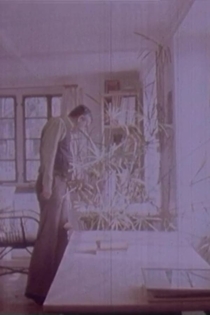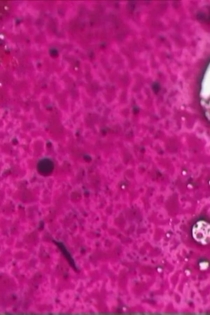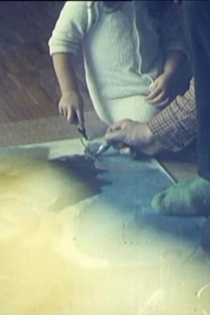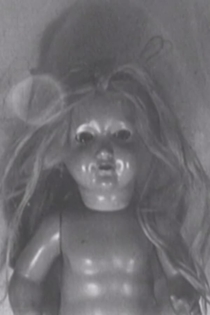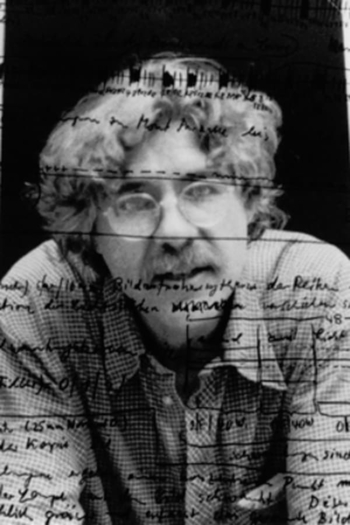
HHK Schoenherr
2021The Old Woman's Face, The Soup Tureen, Vreni Keller Speaks and Madame's Fanny
HHK Schoenherr
Vreni Keller
"I did the takes for this film in the fall of 1966 and in the summer of 1967. I came to know and love the 'old woman' who gave her 'face' in one of the city-run dining halls in Zurich to the first part of the film. I was looking for poets for the film 'Robert Walser' and was hoping to find one in one of the places Robert Walser used to go to decades before, but it proved to be a complete failure. The woman who gave her 'face' attracted my attention because she bad something radiant about her and, despite her advanced age, still had a roguish way of looking at the world. She must have seen me several times before during test takes, because she told me later that she had seen me getting thrown out ('Filming not permitted') and that this had happened at another city-run dining hall. Because the woman appealed to me so much, I asked her on the spur of the moment if she would be willing to let herself be filmed, even though I did not actually know what I wanted to film." (HHK)
The Old Woman's Face, The Soup Tureen, Vreni Keller Speaks and Madame's Fanny
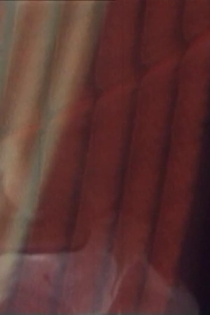
Unten im Fuchsloch auf dem Kaltacker im Emmental
HHK Schoenherr
Guido Haas, Gorgon Haas
Emmental is lovely. To us, it looks like something out of a picture book. And this kind of landscape always has a history. And many good artists come from this landscape. And then the cows in this landscape. In Emmental, there are cows that look at passers-by sweetly, with big, pure cow eyes--and gaze after them. Long... In Emmental, each hill has a north side and a warm, beautiful south side. The filmmaker and sheep farmer, Guido Haas, live on the north side of a hill in Emmental, which is called Cold Ground and his house lies low in the valley and is a real Emmental house, with a raised driveway to the barn and a big shingle roof on top. Spiteful, rich neighbors must have gotten the idea of calling it Foxhole.
Down Below in the Foxhole under the Cold Ground in Emmental
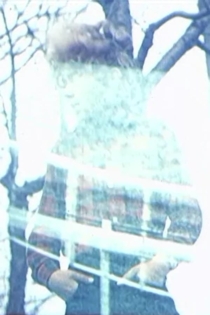
Play 4 & 5
HHK Schoenherr
Julien Blaine
The first film made in black-and-white. Made using my own printing technique. Beforehand: This film, which is basically romantic or, even more, a fairy tale film, with carriages, horses, handmade glass lanterns, as solemn as a merry wedding, with an old Rolls Royce standing at a slant completely drunk and whose magnificent big headlights sit crooked on its fenders. An atmosphere of dancing around and returning and light, lamps and life. A film that even takes its audience to Paris, past the Louvre and into the nights of the boulevards; again and again, light, lamps and life. The film is light-hearted: the sonorous tone indicates a change, difficult to under-stand, a threat or do I hear right? Again and again, the streets, the domes of the churches, the palace wings of the Louvre, the National Library and the small opening in the wall at the Palace Mazarin which leads to the small park with its Picasso statue. What happens in Paris?
Play 4 & 5

Play
HHK Schoenherr
As a word, play stands for playing, playful, giving full play to your imagination, play-acting style, play at passion, playground, manner of playing, playing for time, phase of play, playing a joke, play document, playing field, playroom, and everything that has to do with film, the film stock, with its color and black/white. Unexposed, overexposed and double-and multiple-exposed film, waste material and the creations of fancy.
Play
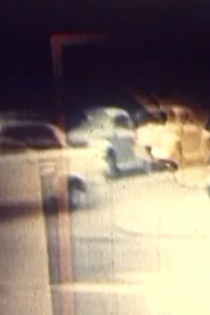
Thaler’s, Meier’s, Sadkowsky’s Life in the Evening
HHK Schoenherr
"I wanted to make a portrait of three artists that would show them by primarily using their surroundings. Therefore, the artists themselves would not be in the picture but rooms, objects, where they walk to and where they drive, and personal and impersonal things around the artists would be described. Through the rhythm of the takes, I tried to achieve a poetic flow that would smoothly compliment their personalities. I told myself at the time that pictures and the rhythm of the pictures should be enough to characterize the three." (HHK)
Thaler’s, Meier’s, Sadkowsky’s Life in the Evening
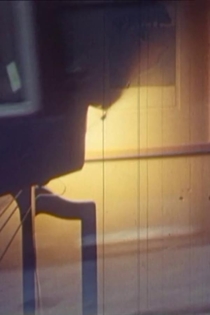
Kleinbürgerliches Dracula-Idyll am Familientisch
HHK Schoenherr
Cli-Cli Schoenherr, Raphaela Schoenherr
"This idyll was made for a Dracula film project by Ernst Schmidt of Vienna, who wrote to various European filmmakers in order to produce a bigger film with their participation." (HHK)
Petty-Bourgeois Dracula Idyll at the Family Table

Das Portrait der Cordua
HHK Schoenherr
Béatrice Cordua
"Location: a ballet company, Mrs. Cordua training alone, training together with another person, head exercises, body exercises, leg and arm exercises, supporting herself, working in the ballet room, taking off her makeup in the dressing room, undressing, washing herself carefully, treating all of the sweaty places of her body (armpits, anus, genitalia), getting dressed, opera house corridors, canteen, driving through the city, typical buildings, shops, factory complexes on the way; apartment—opera house and back, her husband reading the newspaper, sitting, lying down, working, smoking, cooking potatoes, eating potatoes, opening the mail, drinking coffee, filming, caring for feat, mouth, while saying something amusing, hand movement (beheading gesture meaning it is finished), a TV film, dancer relaxing in private, smoking, discussing, disparaging, a TV film, drinking tea, the end: that certain shine in Mrs. Cordua's eyes!" (HHK)
The Portrait of Cordua

